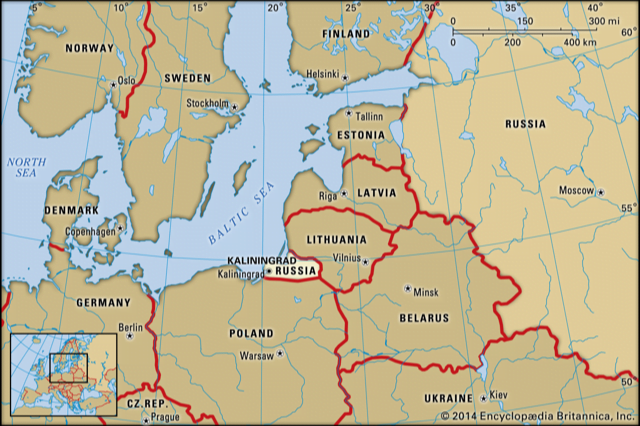UPSC Articles
INTERNATIONAL/ SECURITY
Topic:
- GS-2: Effect of policies and politics of developed and developing countries
Russia’s exit from the Open Skies Treaty
Context: Russia has announced that it was leaving the Open Skies Treaty (OST). In November 2020, USA left the OST after accusing Russia of violating the pact– allegations that Russia denied. Moscow has now blamed Washington for its own decision of leaving the treaty.
What is the Open Skies Treaty?
- It is an accord that allows participants to fly unarmed reconnaissance flights over any part of their fellow member states
- First proposed in 1955 by former US President Dwight Eisenhower as a means to deescalate tensions during the Cold War. Claiming the initiative would be used for extensive spying, Moscow rejected Eisenhower’s proposal.
- However, the landmark treaty was eventually signed in 1992 between NATO members and former Warsaw Pact countries following the demise of USSR.
- It went into effect in 2002 and had 35 signatories, including key players US and Russia, along with one non-ratifying member (Kyrgyzstan).
- The OST aims at building confidence among members through mutual openness, thus reducing the chances of accidental war.
- Under the treaty, a member state can “spy” on any part of the host nation, with the latter’s consent. A country can undertake aerial imaging over the host state after giving notice 72 hours before, and sharing its exact flight path 24 hours before.
- The information gathered, such as on troop movements, military exercises and missile deployments, has to be shared with all member states.
- Only approved imaging equipment is permitted on the surveillance flights, and officials from the host state can also stay on board throughout the planned journey.
Signatories
35 states – Belarus, Belgium, Bosnia-Herzegovina, Bulgaria, Canada, Croatia, Czech Republic, Denmark, Estonia, Finland, France, Georgia, Germany, Greece, Hungary, Iceland, Italy, Latvia, Lithuania, Kyrgyzstan, Luxembourg, the Netherlands, Norway, Poland, Portugal, Romania, Russia, the Slovak Republic, Slovenia, Spain, Sweden, Turkey, Ukraine, the United Kingdom, and the United States.
Significance of the Open Skies Treaty
- Importance for Intelligence Gathering: The OST was signed in 1992, much before the advent of advanced satellite imaging technology which is currently the preferred mode for intelligence gathering. Yet, surveillance aircraft provide key information that still cannot be gathered by satellite sensors, such as thermal imaging data.
- Helps Smaller Countries party to Treaty: Though satellites can provide the same, and even more detailed, information, not all of the treaty states-parties have such capabilities.
- Confidence Building Tool: The treaty is also aimed at building confidence and familiarity among states-parties through their participation in the overflights.
- USA has utilized the treaty more than Russia: Between 2002 and 2016, the U.S. flew 196 flights over Russia compared to the 71 flights flown by Russia. A former Trump official had also hailed OST data gathered during the 2014 Russia-Ukraine conflict.
So, why did the US leave the Open Skies Treaty?
- While it was envisaged as a key arms control agreement, many in US had for over a decade accused Russia of non-compliance with OST protocols, blaming Moscow of obstructing surveillance flights on its territory, while misusing its own missions for gathering key tactical data.
- US President Donald Trump was also unhappy that a Russian reconnaissance flew over his golf course in New Jersey state in 2017.
- In May 2020, the Trump administration announced its intention of withdrawing from the OST, accusing Russia of “flagrantly and continuously violating the Treaty in various ways for years”, and left it in November 2020.

Why did Russia leave after the US?
- A contentious issue regarding Russia’s compliance with the OST was its alleged reluctance to allow flights over Kaliningrad, its exclave in Eastern Europe that sits between NATO allies Lithuania and Poland.
- Russia defended its position by saying that the restrictions were permissible under treaty rules, and gave the example of the US imposing similar limits on flights over Alaska.
- After the US left the OST, Russia sought assurances from NATO allies who continued to remain on the treaty that they would not transfer data collected by their flights over Russia to Washington. In its statement, Russia said that these requests were not backed by the NATO members, prompting it to leave the treaty.
Critical Analysis of the recent development (Russia’s withdrawal from OST)
- Growing mistrust between global powers: The failure of the Open Skies Treaty follows the demise of another significant arms control accord, the Intermediate-Range Nuclear Forces (INF) Treaty, after both the US and Russia left it in 2019.
- Weakens EU’ capabilities to track Russia: Russia’s departure could adversely impact Washington’s European allies, which rely on OST data to track Russian troop movements in the Baltic region
- Larger Nuclear Arms Control Treaty in Jeopardy: Experts are now contemplating the fate of the much larger US-Russia ‘New START’ nuclear arms control agreement, which is slated to expire in February 2021. Trump has already said that his administration would not renew the treaty unless China joins. Despite new President Elect Joe Biden’s willingness to renegotiate, there are apprehensions that it would not be completed before Feb deadline.














